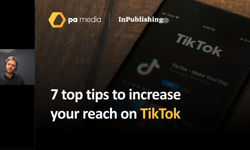
Yet being smarter about making, using and protecting our industry’s core asset – editorial content – must lie at the heart of any media company which wants to prosper in today’s multi-platform, AI-driven world.
One of the key learnings from the main mediafutures benchmarking project has been the need for publishers to take a more structured approach to content. It needs to be a three-step process:
1. Audit
The first step is a content audit, pulling together the full range of current outputs and contact points, the transactional metrics being used and then setting all this into a broader context, which inevitably requires some original research among users, with a strong thread of qualitative interviews (pinning down the ‘how’ and ‘why’ of content usage rather than just the bare ‘what’ of transactions).

We suggest a six-activity template (how the end-users actually engage with the content) rather than the more traditional platform-based approach (how we want to serve it up):
- Read. Long-form or short-form, across whatever platform, print or digital.
- Watch. Downloaded, streamed or broadcast; interactive or one-way; own-platform or third party (eg. TikTok).
- Listen. From simple text-to-speech (and vice-versa) through to podcasts.
- Play. ‘Gamification’ is a growing and complex engagement activity, the most obvious being the use of puzzles to draw users deeper into the full content inventory.
- Share. Simple content-sharing of articles through to blogs and on to sophisticated, interactive communities.
- Buy. Leading into the commercial sharp-end of additional products and services, which can still feel value-adding to the end-user if done in the right way.
None of these activities is a sealed silo. Live Events, as an example, straddles a number of these areas. And ‘reading’ can quickly spill over into ‘watching’ and ‘listening’. And so on.
2. Content creation efficiency
The second step is to dig into the efficiency of content creation. This should not be a crude ‘time and motion’ study that leads into cost-cutting and headcount reduction, but a detached view of how creative resources are being used – and could be used better. It always surfaces things such as unused and duplicated content, multiple handling of content, creative downtime, process inefficiencies, non value-adding activities, the revenue potential of specific pieces of content, etc. This inevitably leads into issues around staff skills (do they already exist in-house?), organisation (cross-platform departments or more vertical and focused centres of excellence?) and tech (can the CMS and CRM systems work with each other and cross-platform?).
3. Content marketing effectiveness
The third step is to assess the effectiveness of content distribution and marketing. This ranges across ‘planning’ (defining audience size, shape and profile, etc), ‘acquisition’ (cost per acquisition, conversion rates, etc), ‘distribution’ (consumption behaviours by channel, engagement, churn and retention, pricing, etc) and ‘monetisation and conversion’ (both revenue and non-revenue metrics).
When adopting this three-stop process, it’s important to remember:
- Get staff buy-in at every stage, but especially at the beginning. Fail here and the whole process will die, usually slowly and painfully.
- None of this should be about simple cost-cutting, but is all about investing (it will cost in terms of time and headspace, as well as in money) in a smarter, more efficient and effective operation, where staff will feel more involved and valued.
- Work back from the end user. For all the talk about being ‘customer-driven’, very few publishers are in reality. As an industry, we are still locked into ‘push’ mode, creating what we think our audience wants in the formats that we want. That means a deep analysis of transactional data plus original (and ongoing) research.
- Work down from a vision as to what you really want to achieve. The temptation is to jump in too quickly, finding the answers to questions that you have not properly defined. Be clear what ‘success’ looks like and what the metrics are to track that.
- Do not over-complicate and over-engineer. Neat, simple dashboards, used day-in-day-out, are essential, although they may well be the result of complex calculations.
- Choose the detailed metrics that fit the specific platform and process, but there have to be some measures that work across multiple platforms. ‘Time spent with’ is a blunt instrument, but is a good start. Measures such as number of articles read, percentage of articles completed and fully-read, are variants of this.
- Refine your metrics. For example, moving from ‘last click’ to ‘historic participation’ in an attribution model can transform the understanding of what is really going on.
- Model the metrics in ‘what-if’ exercises before going live.
- The acid test of everything is pricing. This is not an afterthought, but is central to putting a value on (1) specific pieces of content and (2) how the pieces are bundled into a simple-to-understand ‘product’ for the customer.
- The ultimate mega-metric will always be Lifetime Value in some form or other. And you can LTV anything – customers, brands, promotions, content inventory and employees.
- Record, track and remember everything you do. Reinventing wheels is the most inefficient process of the lot. Yet a little robot may be able to help here!
All of this is a real balancing act: mainly, moving fast enough to deliver real change versus allowing enough time to be strategic, structured and planned. Also, in order to make things happen, it may be necessary to outsource, partner and co-operate (sometimes with traditional competitors).
What is clear is that automation and AI are both, at the same time, disruptive threats and useful tools, in the challenge of making the most of content.
About mediafutures: mediafutures is an annual benchmarking survey of the industry undertaken by Wessenden Marketing in partnership with InPublishing. mediafuturesPULSE is a quarterly survey tracking the short-term shifts in a rapidly changing industry. contentlabs is a structured approach to optimising the creation and marketing / distribution of editorial content.
This article was first published in InPublishing magazine. If you would like to be added to the free mailing list to receive the magazine, please register here.












